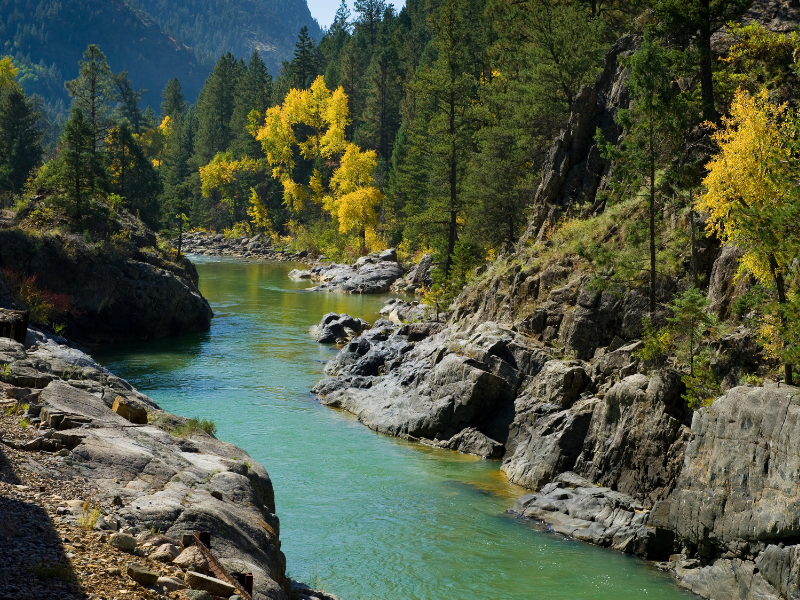Let’s say you have a spring on your land, and you are surrounded by people living in the desert who are desperate for water. You make your living selling it to them, but I like the looks of the spring and I’m rich, so I might offer you even more than it’s worth – not to sell it to them. I don’t need the water. I just enjoy looking at it, so here is the money, and we’ll just leave the water where it is. No more use.
There is a reason that is illegal in the West. Water doesn’t belong to individuals or companies or farms; it belongs to the people. Water rights owners don’t own water. They own the right to use it. That is a property right that can be bought and sold, but only in accordance with applicable law. Part of that law prohibits people from owning water they don’t really intend to use. Why? Because in the West, water is much too precious to be denied to people who need it by people who don’t.
To ensure water is available for proper use, western water law grants property rights to those who build systems that put water to beneficial use: for irrigation, municipal, industrial, or recreational purposes. Without that system, there could be no towns or businesses in the arid West. Because water rights are so valuable, decrees require precise details about the exact location, use, and amount required. Moreover, applicants must prove their ability and intent to use the water as specified. That is called the “can-and-will doctrine.” One cannot get water rights without intending to use them. Without that safeguard, nothing would prevent rich political activists, or a wealthy state like California, from buying up all the water rights in rural areas, for example, effectively evicting all the people and towns.
It turns out that this danger does not apply only to water, but other resources, too. The Administration has proposed new rules allowing public land to be leased for “conservation,” in addition to various uses allowed by law. The proposal, published for public comment in April, would expand the definition of uses for which leases can be sold, for all 245 million acres managed by the Bureau of Land Management (BLM). Conservation would be considered a valid “use” of public land, whether the law says so or not. In this context, that means valid “uses” for which land can be leased include no use at all.
Under the Federal Land Policy Management Act (FLPMA) of 1976, the law that governs management of BLM land, specific uses are authorized, and the agency is directed to issue leases for those purposes, considered important for land management, or to supply important economic
resources, or both. Those uses are named in the law. They include grazing, mining, timber, production of oil, gas, coal, oil shale or other minerals, pipelines, power systems, transmission lines, ditches, canals and other water systems, roads, trails, runways, and several other public interests. FLPMA contains the word “lease” in 49 places, not one of which contemplates leasing public land for no use. The Administration says it believes conservation is among the land uses permitted under FLPMA, though no section of FLPMA mentions any such concept.
This is the latest attempt by the Administration to thwart the plain language of the law. President Biden tried an Executive Order directing the Interior Department to “pause new oil and natural gas leases on public lands…” A federal court blocked the order as a violation of FLPMA, and it remains tied up in court. Congress then passed legislation mandating new oil leases in the Gulf of Mexico and Alaska, reinstating $192 million in “paused” leases, and instructing the Department to hold oil and gas lease sales, including at least 2 million acres on BLM land annually.
So now, the Administration responds with a clever new plan to sell the leases to groups with no ability or intention to use them. Interior Secretary Deb Haaland explained that “It is our responsibility to use the best tools available to… conserve the most important places for the benefit of the generations to come.” Well, no, it isn’t. FLPMA says only Congress can “withdraw” from the specified public uses any parcels of land larger than 5,000 acres.
Secretary Haaland does not get to decide on her own what her “responsibility” is. She is a public employee whose responsibility is determined by law.
Interior points out that, like mineral leases, conservation leases would also generate federal revenue. True, but this isn’t about money. Publicly owned natural resources should never be for sale to the highest bidder, because the public interest requires responsible use for public benefit. There should be a “can-and-will doctrine” for all public resources, not just water.





